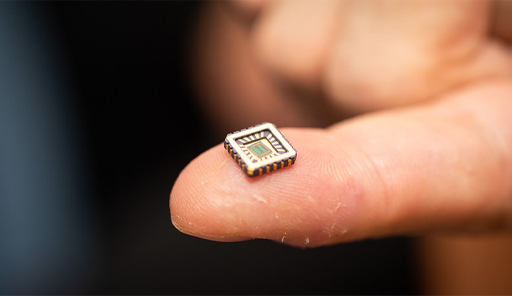5.5 Artificial neurons and neuromorphic computing
The nodes in artificial neural networks are mathematical, but real-world progress is being made. In 2019, a team led by researchers at the University of Bath announced that they had created artificial neurons on silicon chips whose electrical behaviour accurately mimics biological neurons. The potential application for this technology is remarkable. They could be used in medical implants to treat conditions in which neurons have degenerated or been damaged, such as Alzheimer’s.
The grand ambition here is modelling the neuronal circuitry of the brain, rather than individual neurons. This is the approach of ‘neuromorphic computing’. The objective of the European Human Brain Project is to simulate an entire human brain. The SpiNNaker machine at The University of Manchester is currently the world’s largest neuromorphic supercomputer, comprising one million computer core processors, with the aim of modelling connections between a billion biological neurons. This is equivalent to 1% of a human brain.
Will a complete neuromorphic model of the human brain be conscious? Would it be a ‘person’, with its own personality? These are challenging scientific, philosophical and ethical questions without clear answers.
Intelligence and consciousness are, of course, not the same thing. It may be that machines can become ever more intelligent, but never conscious. Perhaps only complex biological entities can be truly sentient, as a product of keeping that biological system alive and functioning.

